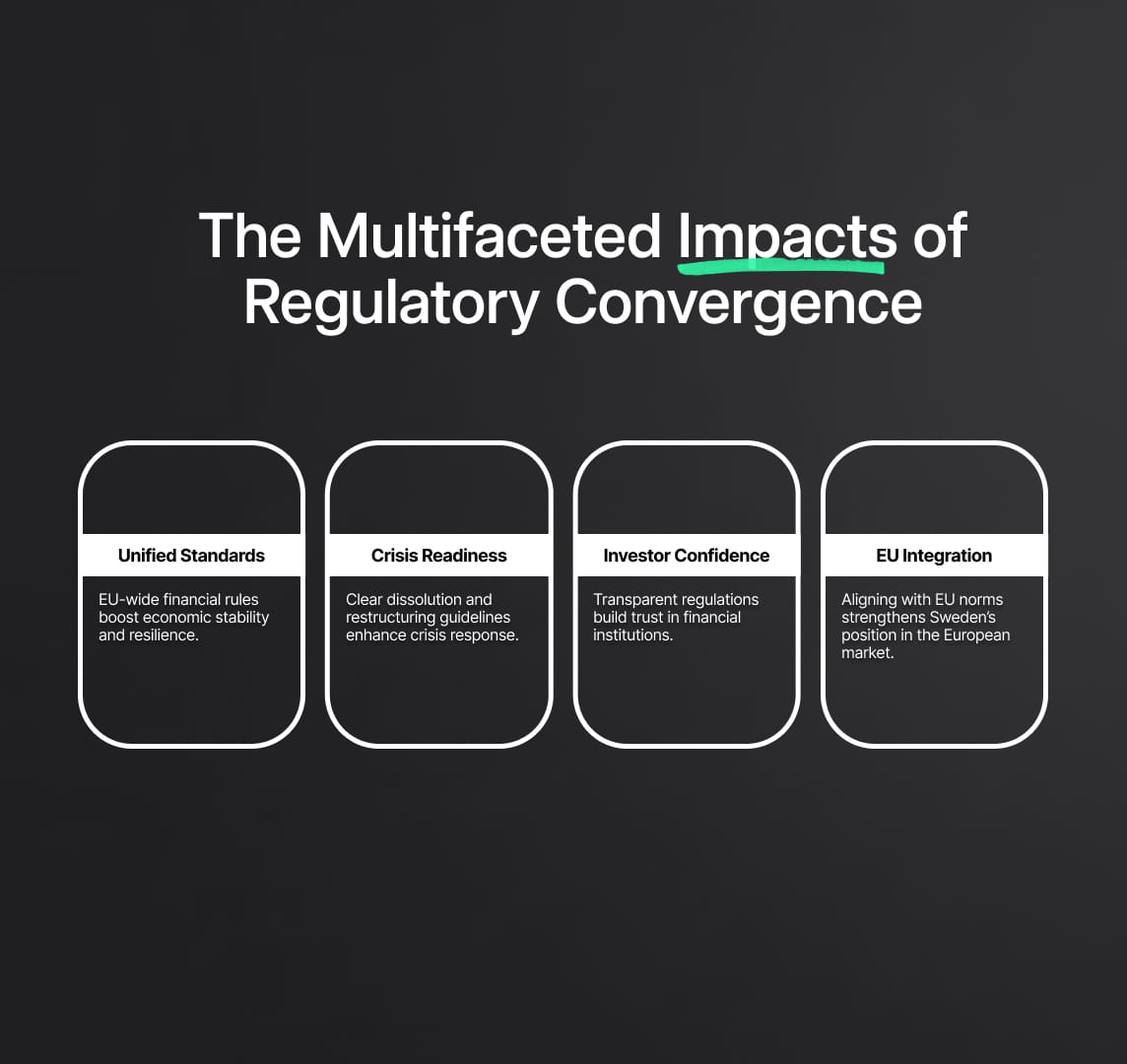EU's Capital Coverage and Crisis Management Regulations
Sweden aligns with the EU's financial directives, emphasizing capital coverage and crisis management. This bold move not only fortifies Sweden's financial landscape but also reinforces European economic unity.

EU's Capital Coverage and Crisis Management Regulations - Clarifications Proposed for Swedish Legislation
The Swedish Government has proposed a revision to its financial regulations to align with the European Union's (EU) capital coverage and crisis management directives. The EU's crisis management rules provide regulations for the dissolution and reconstruction of financial companies. These rules stipulate that in order for a company's capital and debts to be written down or converted in a crisis, the company must meet a requirement for capital base and qualified debt. This proposition for change in Swedish law aligns with the EU's requirements for financial companies, including regulations for cross-border groups. The changes also address issues questioned by the European Banking Authority regarding the compliance of Swedish law with EU regulations. The proposed amendments are expected to take effect on November 15, 2023. This move signifies Sweden's commitment to maintaining strong financial governance and cooperation within the EU.
Sweden's Pioneering Step: Integrating EU's Regulatory Directives for a Cohesive Financial Future
As the global financial landscape experiences unprecedented shifts, Sweden's progressive move to synchronize its regulations with the European Union's (EU) capital coverage and crisis management directives stands out as a testament to foresight and adaptability. This pivotal alignment is not just a nod to Sweden's own financial ambitions but echoes a commitment to strengthen the European economic tapestry.
Central to this alignment is Sweden's acknowledgment of the EU's detailed standards on capital coverage and crisis management. The directives, designed meticulously, serve as beacons during volatile economic phases. They mandate financial entities to uphold specific benchmarks concerning their capital base and qualified debt, particularly when navigating the challenging waters of dissolution and reconstruction. The overarching goal? To create a financial realm that remains unyielding even when faced with macroeconomic headwinds.
For those Swedish enterprises operating beyond national borders, the implications are multi-dimensional. Aligning with EU regulations will necessitate a holistic review of operational strategies, ensuring they resonate with both Swedish nuances and the broader European regulatory chorus.

The Multifaceted Impacts of Regulatory Convergence
Embracing such regulatory harmonization offers a spectrum of advantages:
- Strengthened Financial Pillars: Establishing a uniform financial regulation standard across the EU sets the stage for a more stabilized and resilient economic environment.
- Empowered Crisis Navigation: With transparent guidelines on company dissolution and reconstruction, the sector is poised to handle crises with agility and efficacy.
- Elevated Investor Sentiments: The distinct clarity and assurance emanating from these regulations can foster an atmosphere of increased trust, reaffirming the robust nature of financial entities during turbulent times.
- Strategic Positioning: Aligning with EU norms allows Swedish financial firms to carve a distinctive niche for themselves, fostering seamless interactions within the European market.
However, these rewards come with their own set of challenges. The potential strain of regulatory overheads, especially those revolving around capital and debt standards, warrants attention. To seamlessly integrate these regulations, institutions might have to undertake transformative shifts, both structurally and operationally.
The Roadmap to Regulatory Assimilation
The amendment's activation deadline, November 15, 2023, adds an element of urgency to this scenario. This deadline signifies more than just a date—it represents an inflection point. Swedish financial institutions now stand on the cusp of a transformative journey, one that entails introspection, recalibration, and strategic evolution.
In summation, Sweden's integration with the EU's financial framework marks a watershed moment in its economic narrative. By proactively weaving its regulations into the broader European fabric, Sweden champions a vision of unity, resilience, and forward-thinking. As we closely monitor these developments, it's clear that Sweden is not just preparing for the future; it's leading the way in sculpting a cohesive and robust European financial destiny.
Reduce your
compliance risks

